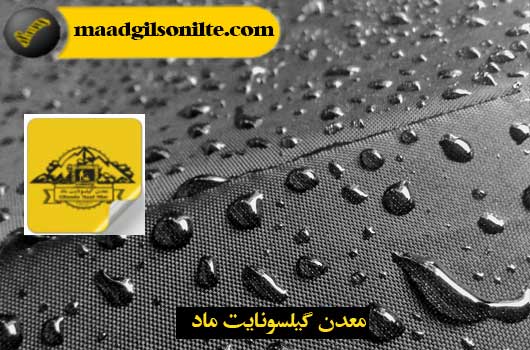
By the end, readers will have a thorough understanding of self adhesive isolator and will be better equipped to determine if it is the right isolator for their projects.
Self-adhesive isolator is a type of moisture-proof, heat-insulating and impregnated with glue, which is widely used in various industries for gluing different surfaces. It is designed to have strong adhesive properties, allowing it to adhere to surfaces without the need for additional adhesive. And it does not need any other adhesive material and it is very easy and simple to use.
The production process of self-adhesive insulator includes covering a layer of adhesive material on the supporting material such as bitumen polymer, special insulation, paper or film, and Gilsonite. The adhesive layer is usually made of a combination of synthetic rubber and resin, which provides the necessary adhesive strength. The backing material provides stability and ease of movement during use.
Self-adhesive isolator is used in a wide range of industries. It is commonly used in packaging and labeling, construction, automotive, electronics and medical sectors.
Its versatility allows it to be used in various applications in these industries.
Some of the special uses of self-adhesive isolator include sealing boxes and cartons, installing signs and posters, connecting plastic and metal parts, securing wires and even connecting medical devices. Its compatibility and ease of use make it suitable for a variety of connectivity needs.
One of the unique features of the self-adhesive separator is its bright color, which allows the user to easily recognize the applied surface and enjoy a higher installation quality due to the bitumen primer contained in it.
Self-adhesive isolator , like white insulation and bituminous insulation, has high flexibility, which allows it to be installed on curved and irregular surfaces. Also, its high elasticity ensures greater stability and resistance to mechanical stresses.
Self-adhesive isogam has waterproof properties and can resist water and humidity well due to the natural bitumen in it. This feature makes the self-adhesive isogam suitable for use in areas with adverse weather conditions such as beaches and wet areas.
Due to the type and quality of self-adhesive isogam, its lifespan is relatively long. This important feature allows consumers to enjoy the excellent performance of this material for a long time.
Self-adhesive isolator has thermal and sound insulation properties. We talked about the features of self-adhesive isogam, and we will examine its applications.
Self-adhesive isolator can be used to insulate the surfaces of walls and ceilings. By applying self-adhesive isogam on these surfaces, it is possible to prevent the penetration of moisture and heat, improve the performance of the building and reduce energy costs.
By using self-adhesive isogam, you can insulate pipes and piping systems and prevent energy loss and water leakage. In this case, self-adhesive isolator acts as an effective and reliable insulator.
By applying self-adhesive isogam around windows and doors, it is possible to reduce air and sound penetration and improve the insulation and protection of the building. This material has the ability to stick on different surfaces and it is very easy to install.
Self-adhesive isolator is used as an effective and reliable insulator in the automotive industry. This material can help in insulating the internal and external parts of cars, prevent the penetration of sound and heat and improve the performance of the car.
Self-adhesive isogam is also used in the marine and petrochemical industries due to its high resistance to corrosive factors and temperature changes. This material can be used to insulate surfaces, pipes and equipment in these industries.
In the fast-paced world of automotive production, efficiency and durability are very important. Isogam self-adhesive has revolutionized the industry by providing a reliable solution for connecting different parts. From attaching trim pieces to harnessing wiring, this adhesive has proven its worth on the assembly line. The ease of use and the ability of natural bitumen to withstand harsh conditions have made insulator adhesive an ideal choice for the automotive sector.
If you’ve ever had trouble opening a package without damaging it, you’ll appreciate the effectiveness of Isogam Self Adhesive in the packaging department. This adhesive provides secure, tamper-proof seals and ensures that products reach consumers intact. From food packaging to fragile items, self-adhesive isolator provides a reliable and convenient sealing solution. Say goodbye to boring packaging woes!
Construction projects require strong and durable bonding solutions, and self-adhesive isogam perfectly meets these requirements. This adhesive has been widely used in the construction industry for various applications. It can be used to glue insulation materials, glue facade panels and even seal joints. The versatility and long-term adhesion of self-adhesive isolator makes it a suitable choice for builders and contractors.
Before using the self-adhesive isolator , it is necessary to ensure that the surface is clean, dry and free of any contamination. Thorough cleaning with a suitable solvent or cleaner is recommended to achieve optimal adhesion.
When using self-adhesive isolator , it is important to follow the manufacturer’s instructions carefully. To ensure even distribution and avoid air bubbles, take your time to level and place the glue correctly. Using a roller or applying uniform pressure over the entire surface will help achieve a strong bond.
In order to maintain the effectiveness of self-adhesive isogam, proper storage and handling is very important. Store the glue in a dry and cool place away from direct sunlight and extreme temperatures. Avoid exposure to moisture or excessive humidity, as it can affect the adhesive properties. Additionally, be sure to handle the adhesive with clean hands or gloves to avoid contamination.
Self-adhesive isogam is used as an effective solution in insulation and protection against moisture, heat and sound. With the unique features of self-adhesive isogam, such as brightness, flexibility, moisture resistance, heat and sound insulation, long service life and wide applications such as insulation of walls and ceilings, pipes and piping systems, windows and doors, automotive industries, industries Marine and petrochemical, this material has become a suitable choice for use in various industries. However, the advantages and
Disadvantages of self-adhesive isolator should be carefully considered and selected according to the needs and environmental conditions of use.
As a result, self-adhesive isogam offers a wide range of benefits and applications in various industries. High bond strength, easy application and resistance to environmental factors make it an attractive choice for many projects. However, it is necessary to consider limitations, such as temperature and chemical resistance, and possible surface damage. By following best practices and staying abreast of emerging trends and innovations, you can make an informed decision about whether adhesive isogam is right for your particular project. Remember to assess your project requirements and consult with experts in the field to ensure the best results.
Waterproofing
Self-adhesive is a moisture-proof, thermal insulation and impregnated with glue, which is used in various industries
It is widely used for gluing different surfaces. This isogam has a very strong adhesion that makes it very easy to use.
Self-adhesive isogam can be attached to various surfaces including metals, ceramics, stone, wood and plastic.
Yes, self-adhesive isogam has high resistance to water and humidity and can be used in areas with adverse weather conditions.
Self-adhesive isogam is usually produced from lit or bituminous foil.

